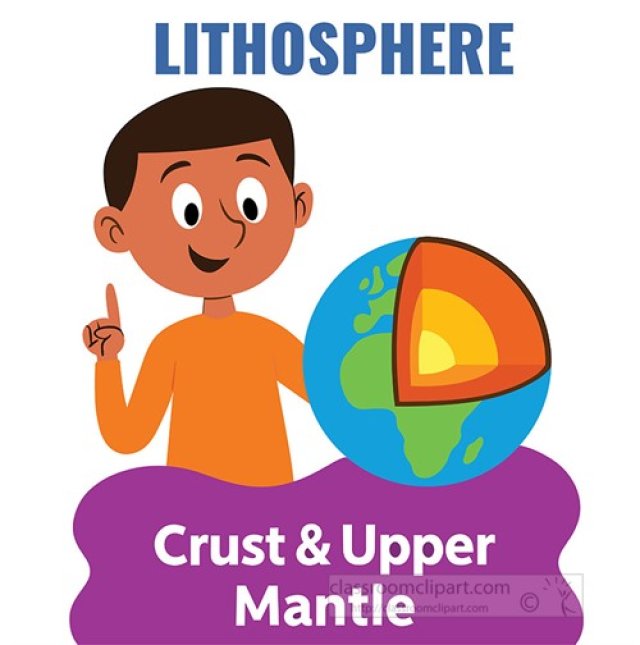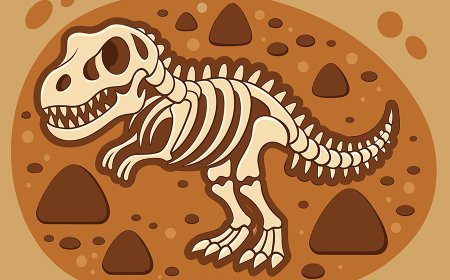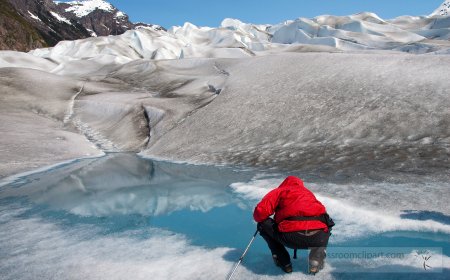Mantle of the Earth for Students | Earth Science Guide
Learn about the Earths mantle the thick layer of hot rock beneath the crust that drives plate tectonics volcanoes and earthquakes in Earth science

🌟 Introduction
Beneath Earth's thin crust lies a massive layer of hot, solid rock called the mantle. The mantle makes up most of Earth's volume-about 84% of the planet! Although solid, the mantle can slowly flow like thick putty over long periods of time. Heat from Earth's interior causes convection currents in the mantle, and these slow movements are the driving force behind plate tectonics, volcanoes, and earthquakes. Studying the mantle helps scientists understand how Earth changes over time and why its surface is never still.
🔍 What is the Mantle?
The mantle is Earth's thick middle layer, located between the crust above and the core below.
It is divided into:
-
Upper Mantle: Includes the rigid lithosphere at the top and the softer asthenosphere beneath.
-
Lower Mantle: Extends deeper and is hotter and more rigid because of the enormous pressure.
Temperatures in the mantle range from about 500 °C near the crust to over 4,000 °C near the core.
🌍 Why is the Mantle Important?
-
Drives Plate Tectonics: Convection currents in the mantle move tectonic plates.
-
Creates Volcanoes: Melted rock from the mantle rises to the surface as magma.
-
Shapes Earth: The mantle's slow movements form mountain ranges, ocean basins, and earthquakes.
-
Supports Life: Without the mantle's heat and movement, Earth's surface would be lifeless and still.
🧪 Everyday Examples
-
Volcanoes erupt when magma from the mantle breaks through the crust.
-
Hot springs and geysers are heated by mantle energy deep underground.
-
Earthquakes are caused by stress from mantle-driven plate motion.
-
Diamonds are formed deep in the mantle and brought up by volcanic eruptions.
✨ Fun Facts
-
The mantle is about 2,900 kilometers thick!
-
It makes up the majority of Earth's mass.
-
Even though it's solid, the mantle flows very slowly over millions of years.
-
Scientists study mantle rocks carried up by volcanoes to learn about its composition.
📌 Key Takeaways
-
The mantle is Earth's largest layer, found between the crust and core.
-
It is made of hot, solid rock that slowly flows.
-
Convection in the mantle drives plate tectonics, volcanoes, and earthquakes.
-
Studying the mantle helps explain Earth's changing surface.
🐾 Kid-Friendly Summary
The mantle is a giant layer of hot rock under Earth's crust. It moves very slowly, but its heat makes mountains, earthquakes, and volcanoes happen!
📚 Vocabulary Words
-
Mantle: The thick layer of Earth between the crust and core.
-
Upper Mantle: The top part of the mantle, including the lithosphere and asthenosphere.
-
Lower Mantle: The deeper, hotter part of the mantle.
-
Convection Currents: Heat-driven movements in the mantle that move tectonic plates.
-
Magma: Melted rock from the mantle that erupts as lava.
-
Lithosphere: The rigid outer layer of crust and upper mantle.
-
Asthenosphere: The softer, flowing part of the upper mantle.
-
Seismic Waves: Vibrations from earthquakes that help study the mantle.
-
Hotspot: A weak spot where mantle magma rises to form volcanoes.
-
Subduction Zone: Where a plate sinks into the mantle.
🧠 Interactive Quiz on the Mantle
- The mantle is located
A. Above the crust
B. Between the crust and core
C. Only inside volcanoes
D. At Earth’s surface
- What makes tectonic plates move?
A. Convection currents in the mantle
B. Wind and rain
C. The Sun’s gravity
D. Ocean tides
- The mantle is made of
A. Water
B. Hot solid rock
C. Ice
D. Gas
- Volcanoes form when
A. Mantle magma rises through the crust
B. Clouds make rain
C. The Sun heats the ground
D. Earth’s core explodes
- About how thick is the mantle?
A. 29 kilometers
B. 290 kilometers
C. 2,900 kilometers
D. 29,000 kilometers




















































